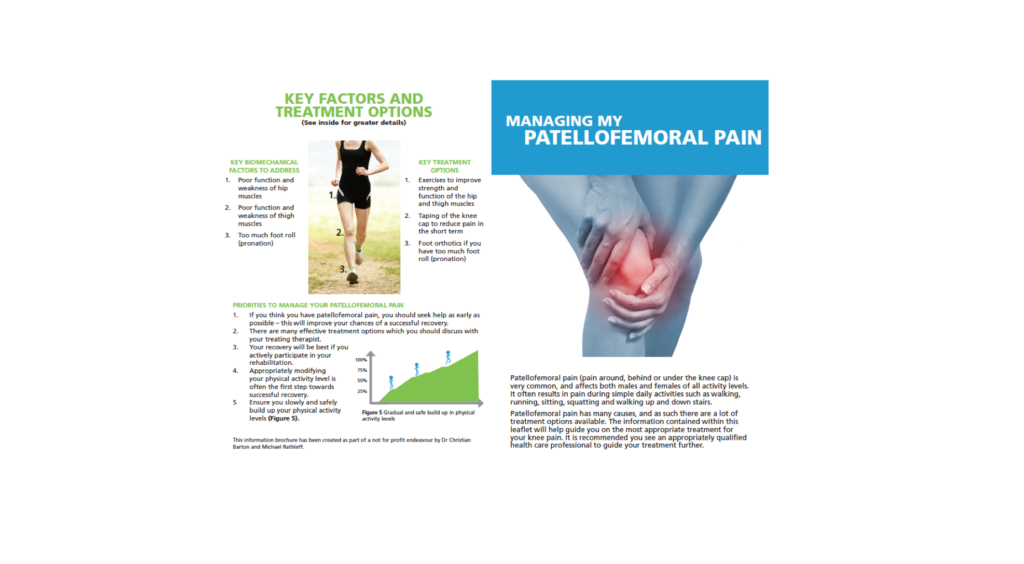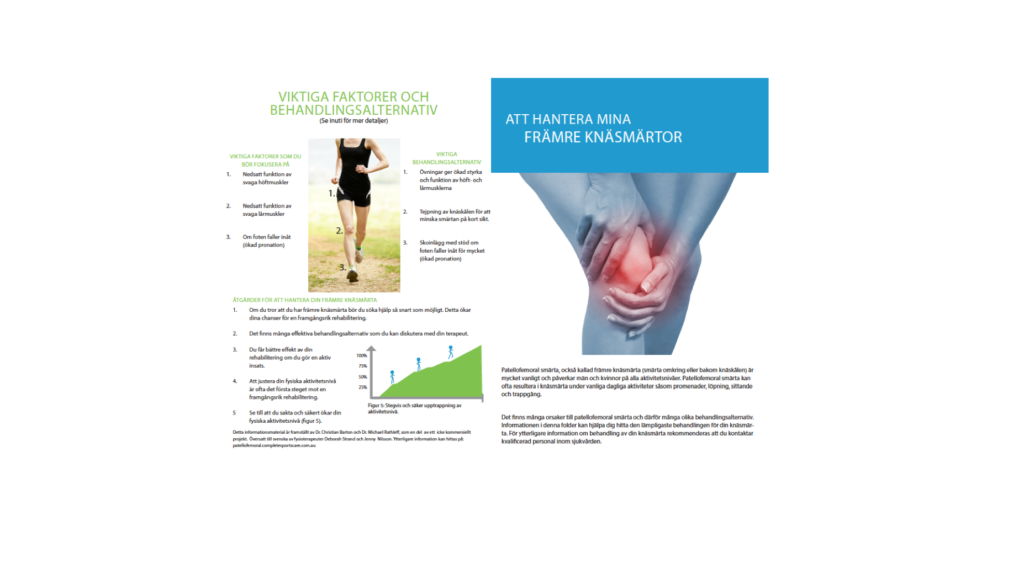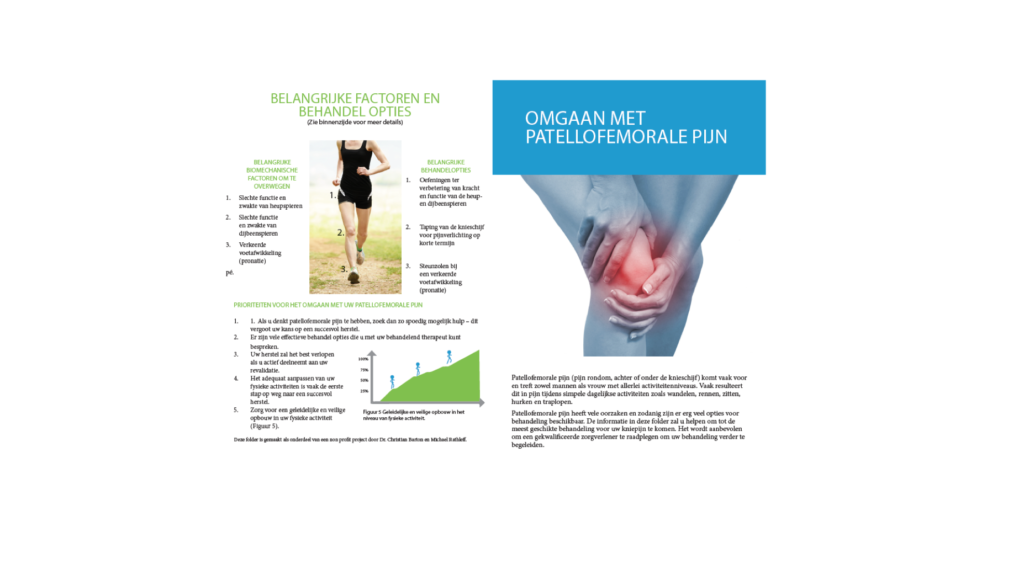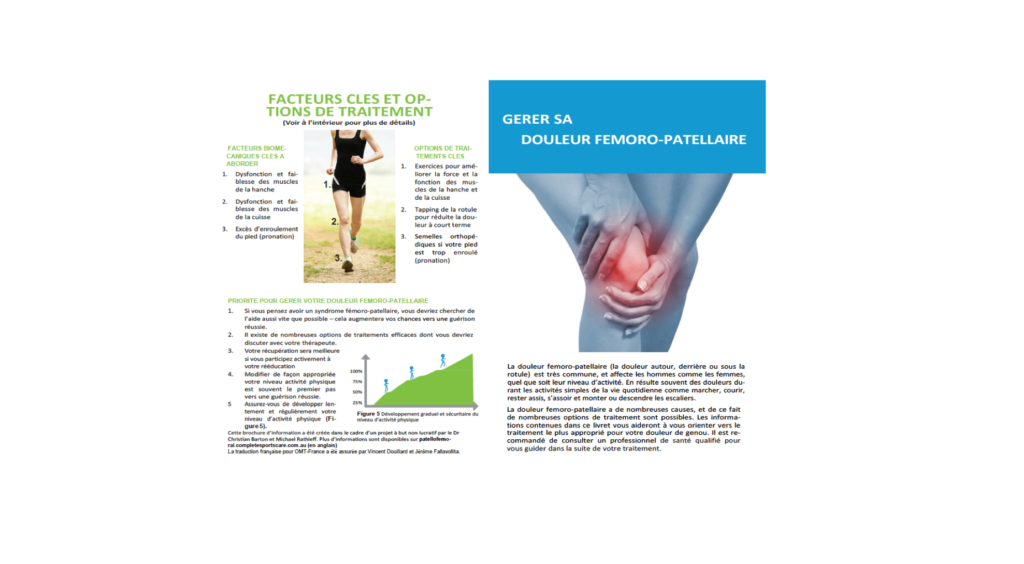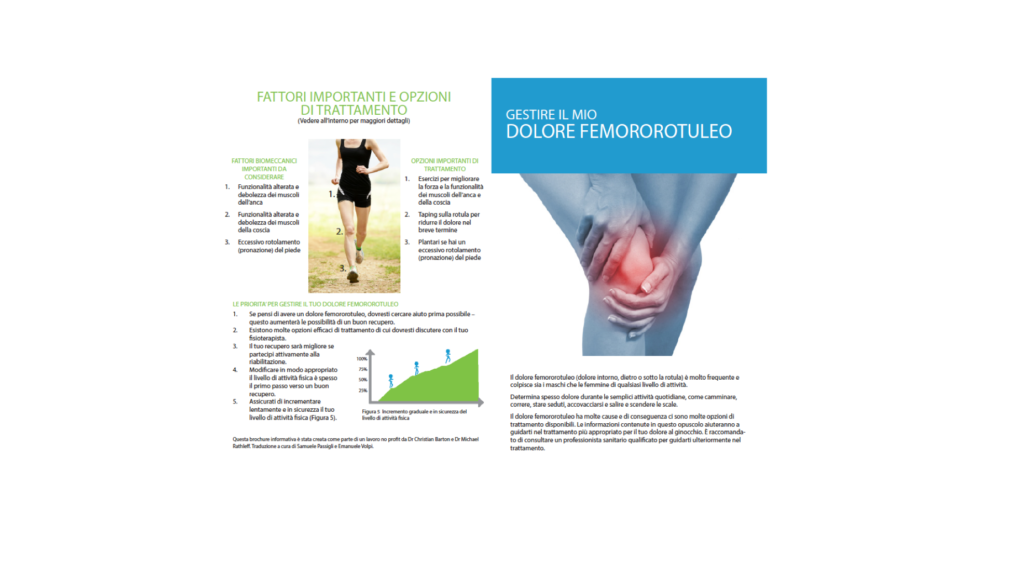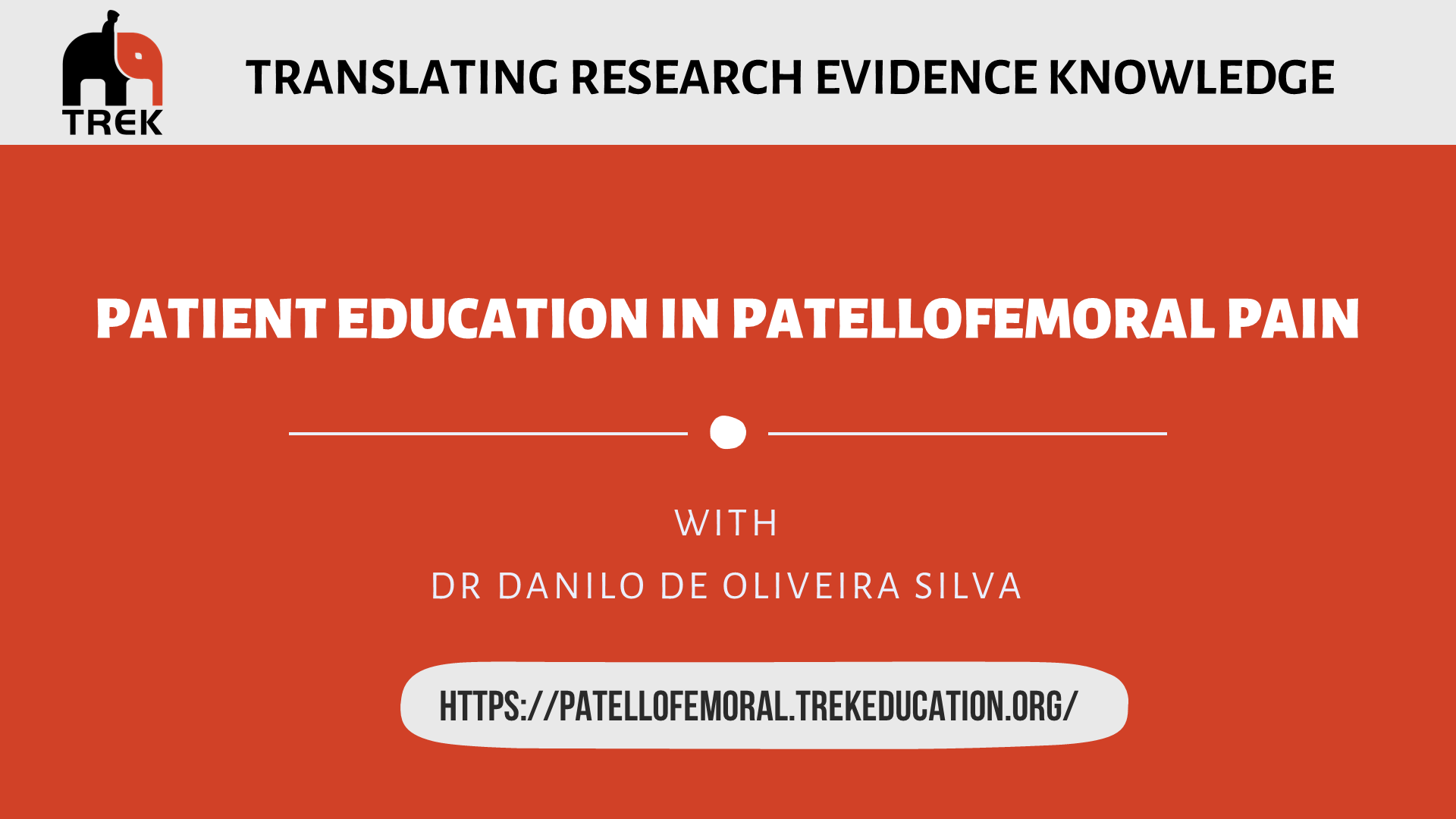One potential solution to improve patellofemoral pain long-term outcomes may be to provide high-quality patient education (eg, patient-specific advice and information on the condition, empowering patients to manage their expectations), which is considered essential by clinicians and researchers.1
In this section, you will find some information and guidance to educate patients with patellofemoral pain.
Education is considered a vital component in the treatment of patellofemoral pain by experts, despite an absence of research directly evaluating its efficacy.1 Recently, a systematic review2 investigated the effect of education interventions (combined with other treatments or in isolation) in people with patellofemoral pain. The authors found that health professional–delivered education produced similar outcomes in pain and function compared to exercise therapy plus health
professional–delivered education in people with patellofemoral pain at 3 and 6 months post-intervention. However, health education material alone was inferior to exercise therapy for improving pain and function at 3 months post-intervention.
These findings highlight the importance of education in the treatment of patellofemoral pain. However, what strategies can be used to educate the patient?
Exercise and physical activity are very good for a patient’s health and well-being. However, doing ‘too much, too soon’ may be a key reason they develop or continue to have patellofemoral pain?
If they are not sensible with how much exercise they do, other normally effective treatments may not actually end up helping their pain management. That’s why managing load is very important.
Take a look at the short video below to get some tips on how you can manage exercise and physical activity loads.
Why do patients need to be sensible with how much exercise they do?
The exact reason why patients develop patellofemoral pain is unclear. However, experts around the world tend to agree that doing ‘too much, too soon’ in relation to exercise may be a key reason.
There seems to be a spike in the number of patients with patellofemoral pain following rapid increases to how much exercise they do – e.g. ‘start to run’ programs (e.g. couch to 5KTM).
The number of people developing patellofemoral pain when completing basic military training has been reported to be as high as 32%.3
In “start to run” programs it can be as high as 17%.4
There are no specific rules on how much exercise patients should complete in order to avoid developing patellofemoral pain. It is also not clear exactly how quickly to increase exercise when returning to sports and other activities if patients are recovering from patellofemoral pain.
The most sensible option is to monitor pain levels during and after exercise. Experts frequently recommend that if patients have a large increase in pain, or pain stays increased for more than 24 hours after exercise, they may be doing ‘too much, too soon’.
Load management education to modify patellofemoral joint loading may include appropriate activity modification, movement pattern modification, and training and exercise therapy to increase the capacity to handle exposure to load. Technologies, including smartphone applications and activity measuring ‘wearables’, provide an easily utilized objective method to analyze baseline levels of activity and determine the magnitude of change following specific interventions. A good summary of such devices can be found in an article published in the scientific journal Physical Therapy in Sport.5
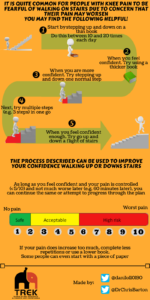 Fear of movement may exist in patients with patellofemoral pain. However, the most recommended intervention for patellofemoral pain is exercise, passive treatments are not likely to help.
Fear of movement may exist in patients with patellofemoral pain. However, the most recommended intervention for patellofemoral pain is exercise, passive treatments are not likely to help.
It is quite common for patients with patellofemoral pain to be fearful of some movements (e.g. running, jumping, and walking on stairs). However, some studies report that reductions in fear of movement are related to reductions in the level of knee pain.6 Therefore, it is highly recommended for patients to keep doing all daily activities alongside the exercise program.
If they are not so confident about walking on stairs at the moment, you may find the following infographic helpful for educating patients.
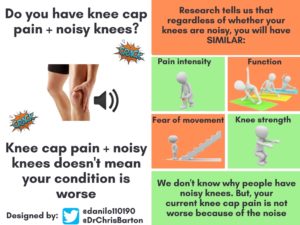 Knee crepitus or noisy knee is a common complaint/concern7 of patients with patellofemoral pain. We don’t know what causes the noise on the knees. But, recent data show that patients with patellofemoral pain who have noisy knees have similar levels of pain, function, fear of movement, and knee strength compared to those who don’t have noisy knees. In other words, if a patient has patellofemoral pain and a noisy knee, it doesn’t mean his/her condition is worse than those who have patellofemoral pain and no noisy knee.
Knee crepitus or noisy knee is a common complaint/concern7 of patients with patellofemoral pain. We don’t know what causes the noise on the knees. But, recent data show that patients with patellofemoral pain who have noisy knees have similar levels of pain, function, fear of movement, and knee strength compared to those who don’t have noisy knees. In other words, if a patient has patellofemoral pain and a noisy knee, it doesn’t mean his/her condition is worse than those who have patellofemoral pain and no noisy knee.
Additionally, a previous study investigated 250 asymptomatic knees (knees with no pain) and found that 99% of people had knee crepitus.
The previously published education leaflet titled ‘Managing My Patellofemoral Pain’8 is a strong educational tool and provides a great visualization to guide patients on returning to exercise. See below the leaflet accompanied by translations into several languages (Spanish, Danish, Sweden, Portuguese, Italian)
- Download English version
- Download Spanish version
- Download Danish version
- Download Italian version
- Download Portuguese version
- Download Swedish version
- Download Dutch version
- Download French version
Listen to Dr Michael Rathleff discuss about the importance of education for patients with patellofemoral pain:
References
- Willy et al. 2019. Patellofemoral Pain Clinical Practice Guidelines Linked to the International Classification of Functioning, Disability and Health From the Academy of Orthopaedic Physical Therapy of the American Physical Therapy Association.
- De Oliveira Silva et al. 2020. Patient Education for Patellofemoral Pain: A Systematic Review.
- Van Tigglen 2009. Delayed vastus medialis obliquus to vastus lateralis onset timing contributes to the development of patellofemoral pain in previously healthy men: a prospective study.
- Thijs 2008. Gait-related intrinsic risk factors for patellofemoral pain in novice recreational runners.
- Willy 2017. Innovations and pitfalls in the use of wearable devices in the prevention and rehabilitation of running related injuries.
- Domenech 2014. Changes in catastrophizing and kinesiophobia are predictive of changes in disability and painafter treatment in patients with anterior knee pain.
- Robertson 2017. People’s beliefs about the meaning of crepitus in patellofemoral pain and the impact of these beliefs on their behaviour: A qualitative study.
- Barton 2016. ‘Managing My Patellofemoral Pain’: the creation of an education leaflet for patients.

